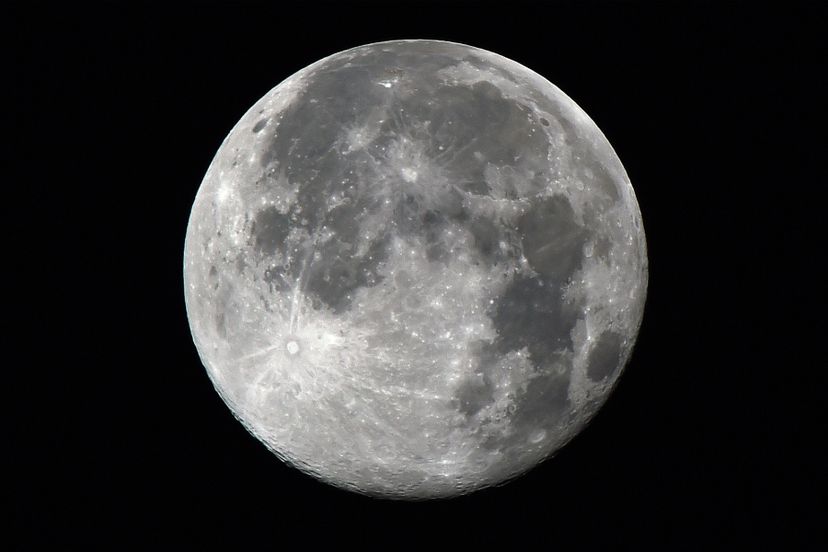
About This Quiz
Wolves supposedly howl at it, a fairy tale claims a cow once jumped over it and legends say if you look hard enough, there's a man in it. Yes, the moon has a prominent place in popular culture, but there's a lot you might not know about Earth's little orbiting friend. Why doesn't it have soil? Why is its gravity so important? And are we really thinking of going back soon?The moon is Earth's only natural satellite, as well as the closest celestial object, orbiting just 240,250 miles from Earth.
From 1969 to 1972, six lunar landing missions afforded 12 American astronauts the opportunity to walk on the moon. In addition to taking photographs and setting up scientific instruments, the astronauts returned with 842 pounds (382 kilograms) of moon rocks and dust samples.
At about 700 miles (1,100 kilometers) in diameter, the Mare Imbrium is the largest of its kind on the moon. Maria are the dark areas on the moon and cover about 15 percent of the lunar surface. The maria consist primarily of basalt, an igneous rock derived from cooled lava.
Advertisement
The gray surface of the moon is not actually soil because nothing lives on the moon. It's known as regolith, a mixture of a fine powder of rocks and volcanic glass particles along with larger rocks.
By examining rocks brought back from the lunar surface, geologists found that the density of the moon (3.3 g/cm3) is less than the density of Earth (5.5 g/cm3). This indicates that the moon doesn't have an iron core.
The double planet hypothesis of the 1960s claimed that the moon and Earth had formed at about the same time. Upon studying lunar samples, however, scientists found that the composition of the moon was different from the composition of Earth. If the double planet hypothesis was correct, then the composition of both bodies should've been the same, and it wasn't.
Advertisement
The period of lunar volcanism on the moon lasted from about 3.7 to 2.5 billion years ago. During this time, lava flowed from the moon's volcanoes, and much of the moon's heat was lost. Once the volcanic period ended, most of the moon's internal heat was gone, so there was no major geologic activity.
Amazingly, the changes in the level of Earth's oceans are caused by the pull of the moon's gravity. The moon's gravitational force pulls on water in the oceans and stretches the water out to form tidal bulges. This is what creates two high tides and two low tides each day.
When the moon passes through the umbra, a total lunar eclipse occurs. In a lunar eclipse, the moon passes through the Earth’s shadow, created by the sun, which causes its light to dim.
Advertisement
Various nations have proposed lunar missions by 2035. The primary reason for man returning to the moon is to build lunar bases on the lunar surface. The United States, Japan and China are a few of the nations that have explored this possibility. Returning to the moon to build a lunar base would be done for research and commercial purposes, including manufacturing, mining and tourism.